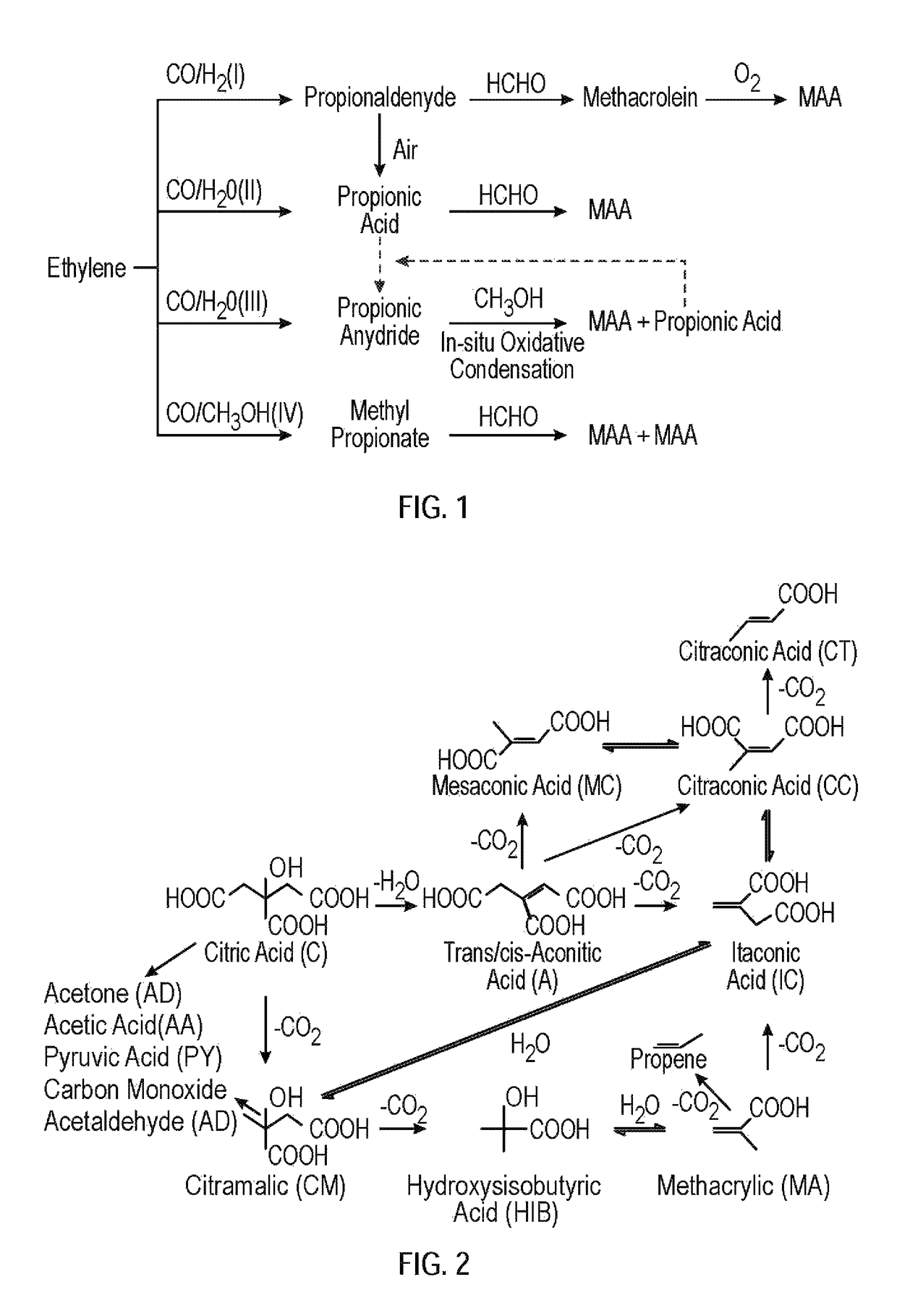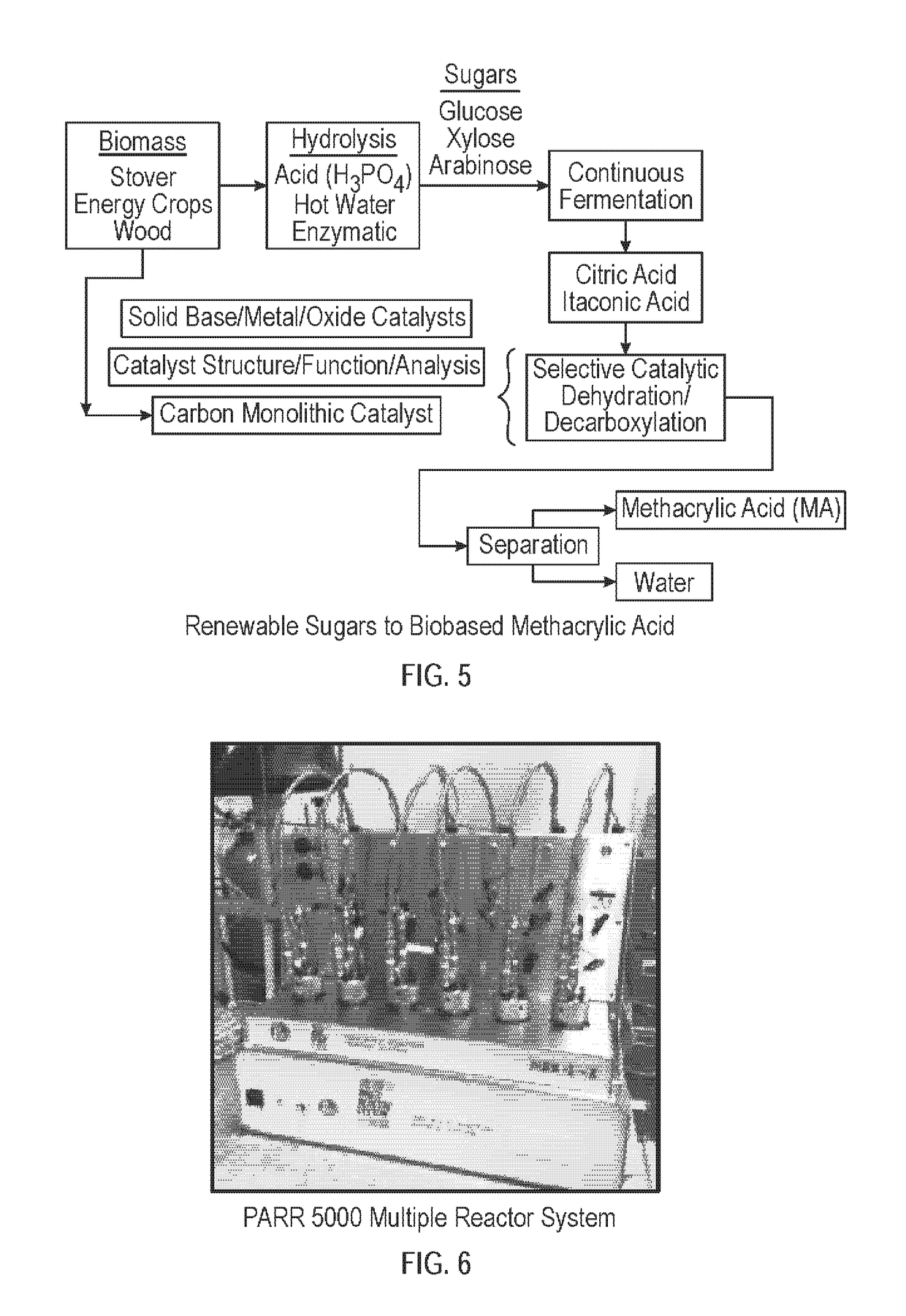Methacrylic acid production method
a technology of methacrylic acid and production method, which is applied in the preparation of carboxylic compounds, metal/metal-oxide/metal-hydroxide catalysts, physical/chemical process catalysts, etc., can solve the problems of high process cost, toxic starting material, and high amount of bisulfate waste that must be disposed,
- Summary
- Abstract
- Description
- Claims
- Application Information
AI Technical Summary
Benefits of technology
Problems solved by technology
Method used
Image
Examples
example 1
ite and Pd / Hydrotalcite Synthesis
[0075]The raw hydrotalcite (HTC) powder with MgO / Al2O3 ratio=4.0-5.0 (purchased from Sigma-Aldrich) was calcined at 400° C. overnight and then allowed to cool. It was stirred in deionized water to make a paste, and the paste was placed in a 105° C. degree drying oven over night. Then the dried hydrotalcite was smashed and sieved to a particle size between 1 mm and 0.5 mm.
example 2
on Hydrotalcite Preparation
[0076]Literature review analysis indicates use of transition-metal catalysts such as palladium and platinum in production of methacrylic acid from itaconic acid. The importance of reaction medium basicity in decarboxylation of itaconic acid to methacrylic acid was also discussed in the background and literature analysis chapter. Therefore a solid-base catalyst impregnated with a transition metal will be synthesized with the purpose of increasing methacrylic acid yield in decarboxylation of carboxylic acids such as itaconic acid. Pd / HTC will be prepared using incipient wetness impregnation (Nikolopoulos et al., 2005). Incipient wetness impregnation is a technique for the synthesis of heterogeneous catalysts. The active metal precursor is dissolved in aqueous solution. Then the metal containing solution is added to the catalyst support containing the same pore volume as the volume of the solution that was added. Capillary action draws the solution into the p...
example 3
lation of Citric Acid
[0077]Decarboxylation process is also applicable to citric acid, a more widely available bio-based substrate. Citric acid requires one dehydration step, followed by two decarboxylation steps to result methacrylic acid. The kinetics of methacrylic acid formation from citric acid over varying temperatures, and catalysts were studied. The reactions were performed at temperatures of 200, 225, 250° C. and for one hour residence time. The feedstock solution contains 20 g / lit citric acid and 0.15 mol / lit NaOH. The effect of adding NaOH in experiments is due to a change in pH. pH of the medium effects on methacrylic acid selectivity. At low base concentrations, methacrylic acid degradation can also occur due to acid-catalysed addition of water molecules across the double bonds. The initial series of experiments were performed with hydrotalcite, Pd / C (5 wt. %-Alfa Aesar) and synthesized iron oxide / C catalysts.
PUM
| Property | Measurement | Unit |
|---|---|---|
| temperature | aaaaa | aaaaa |
| pressure | aaaaa | aaaaa |
| temperature | aaaaa | aaaaa |
Abstract
Description
Claims
Application Information
 Login to View More
Login to View More - R&D
- Intellectual Property
- Life Sciences
- Materials
- Tech Scout
- Unparalleled Data Quality
- Higher Quality Content
- 60% Fewer Hallucinations
Browse by: Latest US Patents, China's latest patents, Technical Efficacy Thesaurus, Application Domain, Technology Topic, Popular Technical Reports.
© 2025 PatSnap. All rights reserved.Legal|Privacy policy|Modern Slavery Act Transparency Statement|Sitemap|About US| Contact US: help@patsnap.com



